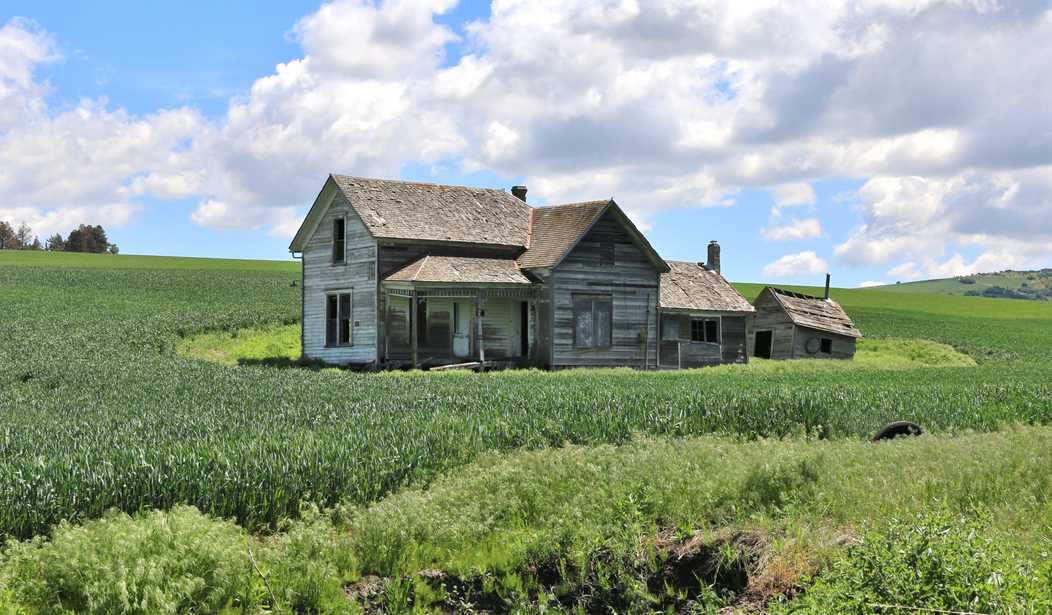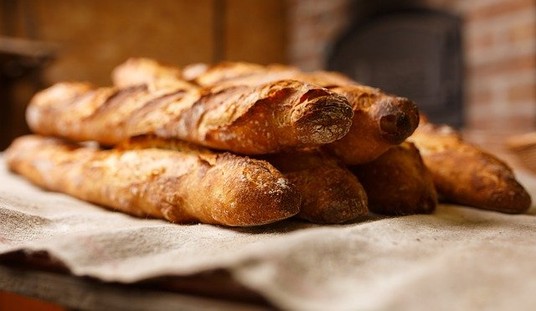Maybe it’s time to say the hell with the whole thing and head back to an agricultural lifestyle:
Running late after several wrong turns, I made a final, desperate attempt to locate Shaye Elliott’s home by driving into what appeared to be an apple orchard. Down a dirt path, past a gaggle of squawking geese, in the shadow of the town’s 10-story cross, there it was: the two-acre property outside Wenatchee, Washington, on which Elliott cultivates nearly all the food she feeds herself, her husband, and their four children. The Elliotts’ squat three-bedroom house, which they renovated themselves, was nestled among a pigpen, a rabbit hutch, a chicken coop, two pastures, and three gardens, the sum total of which Elliott refers to as her “homestead”—a nod to the back-to-basics, pioneer-inflected movement that inspired her lifestyle.
Elliott, who is 32 years old, “homesteads” not because it’s practical (it’s not) or because she grew up farming (she didn’t) but because, she says, modern technology “has stripped people of their purpose.” In hopes of “drawing on and learning things of the past,” she has for eight years rejected an increasing number of modern conveniences. Like the 19th-century homesteaders who traveled west in covered wagons, she churns butter, stocks her larder before winter, and treats illnesses with herbs. Unlike the pioneers, however, she enthusiastically broadcasts her life to an audience of Instagram followers, YouTube subscribers, book buyers, and 100,000 monthly readers of her blog, The Elliott Homestead. One of her chickens, Helen, has become a celebrity for antics like sneaking into the house to peck at butter. “You think these Instagram Stories are made up,” Elliott said as a less famous chicken wandered through the front door. “Very much not.”
Elliott belongs to a growing network of bloggers who have tapped into—and fueled—the growing homesteading movement, which encourages self-reliance through the embrace of traditional skills and subsistence farming. A homesteader seeks to “be a producer and not just a consumer,” Elliott said. (She and others distinguish themselves from farmers in harvesting food solely for their own needs, not to sell.) The appeal of this retro-agrarian lifestyle transcends ideological differences, uniting farmwives and feminists, hippies and Christians, preppers and yuppies, from Brooklyn to rural Alaska. Despite its ostensible rejection of consumerism, the subculture has spawned a brisk trade in homesteading-themed TV shows, books, gear, and courses. Last year, the inaugural Homesteaders of America conference drew 1,500 attendees—more than twice the expected turnout—and organizers expect hundreds more this year.
No single definition qualifies someone as a homesteader, but bloggers’ neo-frontier dispatches generally combine elements of Goop, Little House on the Prairie, and Mad Max. The more extreme ones offer tips on building yurts without plumbing (but with Wi-Fi) or finding water in the event of societal collapse. Most provide instruction on insourcing necessities, such as forging knives, making deodorant, and spinning wool.
Like a disproportionate number of these bloggers, Elliott is a white woman with a bearded husband, homeschooled children, faith in Jesus Christ, and many photos of soulful cows.
To its credit, the Atlantic, in which this story appeared, notes that the back-to-the-land movement is a recurring reactive trope in American history, from the millennarian communities in upstate New York in the 19th century to the hippie communes of the 20th. Fed up with the soullessness of modern living, Americans often turn to the “simpler” life of the countryside, only to find that a hardscrabble existence ain’t all it’s cracked up to be unless it can be ameliorated with modern amenities.
Homesteading, romanticized by nearly every generation save the one that originally endured it, has routinely been embraced by Americans during periods of anxiety and upheaval. “The entire history of America is that in times of political and economic insecurity, people revert to a very visceral sense that taking control of their food and of their homes is where security lies,” says Toni Smith, a homesteader and an English professor at Vancouver Island University. Smith notes that the back-to-the-land movement especially resonates with middle-class white Americans: “The Little House on the Prairie touchstone is their default.” (Not surprisingly, the term homesteading has been criticized by some observers of the current movement, in part for its associations with a government policy that had disastrous consequences for American Indians.)
Versions of homesteading flourished after the Great Depression, during the Vietnam War, in the years before Y2K, during the Great Recession, and again more recently, amid the rise of an anti-establishment ethos. When I asked Elliott, who leans libertarian, why her lifestyle resonates among progressives and Tea Partiers alike, she said, “I think a common thread is a mistrust in the Man.”
She is a devout follower of Reformed Presbyterianism, a sect of Protestantism that views the Bible as the literal word of God, and she believes that men and women “were designed with specific roles.” “We’ve spent so much time and energy fighting that,” she told me. “And I don’t think that makes people happier.”
The irony is that homesteading turned out to be financially remunerative for Ms. Elliott as well:
Although homesteading sites tend to celebrate the cult of domesticity—Elliott has a post commending the modest femininity of long skirts from the Edwardian era—the offline reality is more complicated: Like many young women who’ve amassed large online followings by documenting their lives as homemakers, she is her family’s breadwinner. In 2014, a fellow blogger recruited her to sell essential oils for doTerra, a multilevel marketing company whose logo is plastered across homesteading sites. Within a year, her business was so profitable that Stuart quit his job; Elliott now makes $500,000 a year selling to fellow “oilers.” Her blog, which helps her recruit customers and salespeople, is heavy on suggestions for using oils. In one 10-day period on Instagram, she demonstrated how geranium oil could heal a duck’s infected foot, how lemongrass could repel pests, and how Roman chamomile and rosemary had cured her son’s hives.
By and large, homesteading’s champions have embraced their way of life for reasons more spiritual than utilitarian. The “About Me” sections of other homesteading sites are filled with stories of how debt and burnout inspired the author to find a path that did not require sacrificing life for livelihood. Like Marie Antoinette’s pleasure dairy, tilling the soil and milking cows acquire a certain charm when they are a choice, not a necessity. Elliott readily concedes that if the broccoli harvest fails—as it has every other year—her family won’t starve; they’ll use their doTerra money to stock up at the supermarket.
Sounds like the best of all possible worlds.









Join the conversation as a VIP Member